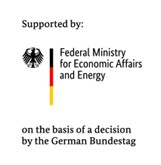The project team collaborates with pilots, i.e., cities or municipal utilities and their energy cooperatives, where existing actors such as ECs and citizens will test and implement the project. Additionally, the pilots contribute to the platform's design by acting as an interface between project partners and the needs of citizens, ECs, and other stakeholders (e.g., distribution network operators, municipal utilities) on-site.
The project is divided into six interdependent work packages (WPs) that methodologically overlap. WP1 includes project management; based on the timeline and various project goals, the content-related WPs are as follows: survey of national and pilot-specific framework conditions in light of international best practices (WP2); assessment of needs and potential of various stakeholder groups (WP3); development of standardized participation models for different participation types, so-called "personae" (WP4); design of the structure and content of the digital platform and citizen app, as well as programming, testing, and rollout (WP5); dissemination of results, implementation on a broader scale, and networking with existing or emerging projects and other stakeholders (WP6). The pilots are integrated into WPs 2 through 6.
Fraunhofer ISI focuses on identifying various preferred designs for EC or ES formats. Methodologically, relevant dimensions and design options for participation formats will be collected and analyzed through literature research, surveys, and potentially experimental methods within and outside the pilots. The result will be a systematic overview of dimensions (e.g., goals, benefits, cost aspects, form and extent of information) and the preferred configurations of design elements for financial participation formats for citizens (in electricity), taking into account non-financial participation elements , requirements of various stakeholders, and potential impacts on the energy system and society.
